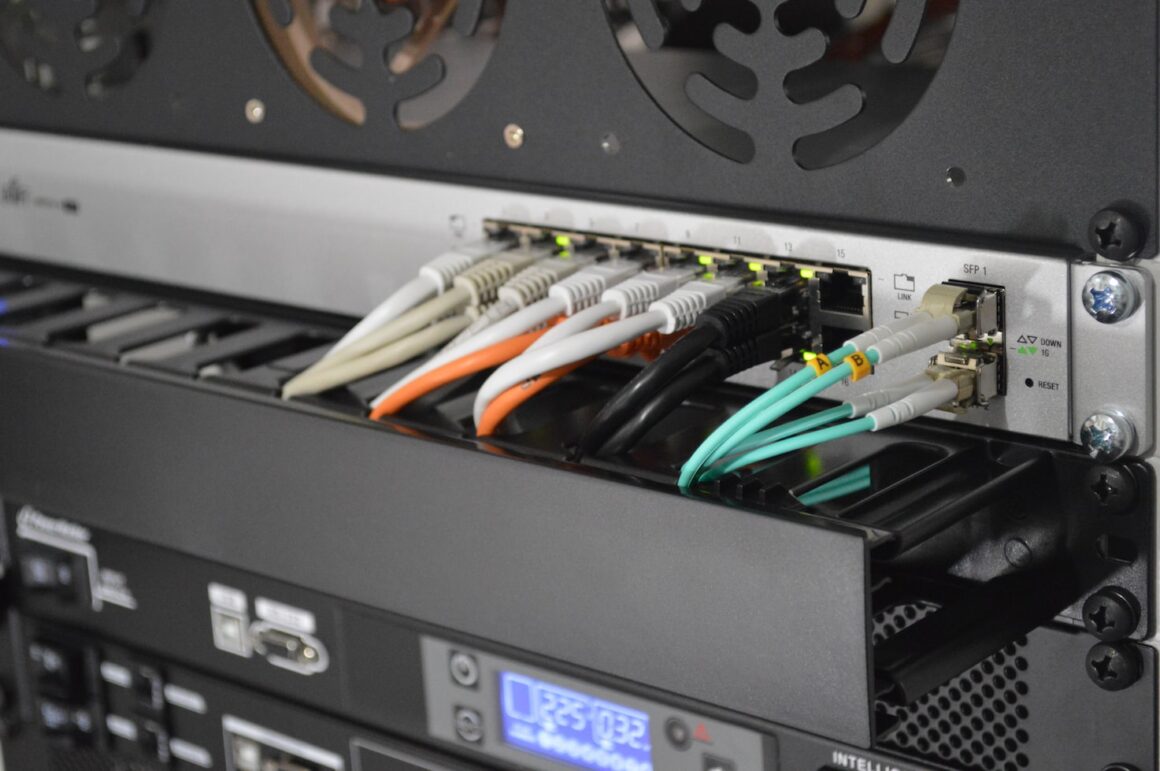Over the last decade, data center administrators have seen huge changes in traditional data center architecture – from software-defined networking and edge computing to 5G networks and AI. These advancements alter the composition and needs of corporate data centers. They also put more strain on data center personnel, who must investigate, set up, integrate, and maintain these new technologies. Innovation creates new opportunities, but it may also complicate the work of data center.
However, there is one new technology that promises to simplify and manage data center design. Hyperconverged Infrastructure (HCI) combines IT resources like storage, memory, and computing into standardized building pieces that are supplied as hardware appliances or virtual HCI stacks. HCI makes use of off-the-shelf commodity components outfitted with similar networking gear, hypervisors, storage assets, and management software. Each unit or appliance functions as a little data center in a box that can be expanded by simply connecting more boxes. This modular infrastructure enables enterprises to create new, more efficient data centers or easily add resources to existing data centers.
The Popularity of HCI Solutions
The need for a hyperconverged system is growing all the time. The global market for HCI goods and services is expected to reach $6.1 billion in 2023, rising to $53.83 billion by 2030. It is expected that enterprises that want to lower their IT expenses, simplify IT administration and operations, speed up data center construction or develop a more scalable infrastructure that is sufficient to meet future IT demands are the most likely to use HCI.
HCI emerged from the converged infrastructure idea (CI), which is a set of preconfigured hardware and software that an IT manager may purchase and install themselves. It’s similar to a make-your-own-tacos kit in that it includes packets of sauce, seasonings, cheese, and taco shells all in one box. IT administrators may avoid having to verify hardware compatibility, order from various vendors, and configure everything from zero when they use CI.Â
HCI takes convergent infrastructure a step further by combining and integrating all of the components into a plug-and-play appliance, similar to a TV meal rather than a DIY kit. If your HCI-built data center needs extra capacity, just purchase more HCI units. This ease of scalability enables organizations to rapidly expand to suit an organization’s changing demands.
The Key Benefits of HCI in a Data Center Environment
Aside from scalability, the equipment provides four additional significant benefits in data center architecture and operations. Let’s deep dive so that you know what you can count on.
Components With Lower Costs
Most HCI appliances are built on off-the-shelf servers, allowing organizations to significantly reduce costs and simplify procurement. Every time capacity is needed, the business only has to purchase one kind of equipment rather than separate proprietary storage arrays, controllers, and networking components. Because of this single-vendor model, organizations can obtain technical assistance faster and execute updates and upgrades more efficiently, avoiding confusion and several contacts with different vendors.
Software-Defined Adaptability
Infrastructure components are handled as services in a software-defined data center. These virtual infrastructure services may be remotely monitored and adjusted, allowing IT to supply more or less storage capacity, memory, and processing power, along with other software-defined resources as needed. HCI’s software-defined architecture allows data center resources to be upgraded on demand.
Optimization of Resources
By treating computing, storage, and network resources as shared resources inside clusters, hyper-converged architecture improves their use. If one kind of workload or application requires additional memory, storage capacity, or processing power, idle resources on other clustered HCI appliances might be leveraged to meet the need. These assets may be detected, aggregated, and provided to apps based on their needs thanks to unified administration.
Management Flow
A single console runs all aspects of the HCI utility, including computing capacity, file storage, memory, and network connectivity. Local and remote HCI clusters are maintained altogether, greatly simplifying IT management. IT firms that use the HCI paradigm benefit from lower IT staff costs and skyrocketed capacity. IT teams no longer have to deal with deployment, integration, maintenance of individual hardware components, and other data center management issues that are prevalent with three-tier data center architecture.
Furthermore, firms have fewer needs for IT expertise in areas such as storage and networking. With HCI, IT generalists can handle the majority of the job, saving money on pricey experts. Cloud infrastructure requires flexibility, scalability, and simplicity of management. HCI may help organizations build their own private clouds since it eliminates the need to assess several hardware solutions, configure them, and deploy individual computing, storage, and network components.Â
The labor reductions allow IT personnel to devote more time to cloud application development and other mission-critical IT tasks. Similarly, the quick scalability and compact architecture of HCI are gaining recognition among public cloud providers, who are implementing HCI into their own infrastructure and producing HCI-based solutions.
Recovery
Cloud companies are looking at new methods to develop specialty HCI platforms and services tailored to certain use cases. HCI solutions are available from providers for a variety of apps, including private cloud development, edge computing, remote office infrastructure, and virtual desktop environments. AI is another application that might benefit from a tailored HCI platform.
While HCI does not solve all infrastructure concerns, it does promise to be a viable solution for enterprises looking to simplify their data center architecture or rapidly and handle certain IT use cases effectively. The benefit of a hyper-converged data center is that you can quickly grow the process if you require additional computing power. Simply attach a couple of additional boxes, depending on how much you need to scale everything. As a result, each firm has a fantastic chance to strengthen its HCI data processing centers.
Wrapping up
It is already obvious how rapidly the demand for the construction of such data centers is increasing. The global market for such products and services was projected to be worth more than $6 billion three years ago. It will be worth more than $22 billion in five years. Companies must now decrease information technology costs, develop data centers quickly, manage many operations, and grow quickly. And this is something that HCI can help with.








